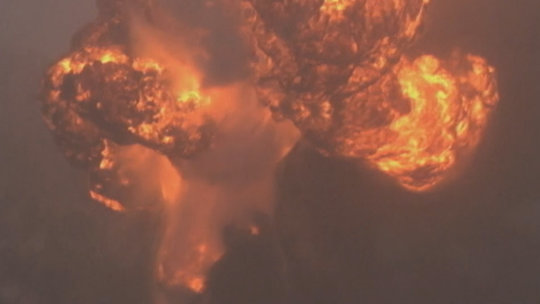Resilience A Priority in Global Supply Chains—McKinsey
I love irony. No sooner had I discussed with a colleague about the time I worked for a couple of McKinsey alums than I received an email promoting a new study undertaken by, you guessed it, McKinsey. Actually the McKinsey Global Institute (MGI). The paper’s authors researched global supply chains very timely in light of the Covid-19 pandemic. The report highlights vulnerabilities in global supply chains and how resilience takes priority, calculating ongoing cost of shocks and prospects for production to shift.
In brief:
- Industries experience month-long disruptions every 3.7 years on average
- Companies can expect supply chain disruptions to erase 40 percent of a year’s profits over the course of a decade on average—and extreme events take an even bigger toll
- Up to a quarter of global trade flows could move to different countries over the next five years if companies restructure their supplier networks and governments take action. But moving supply chains is not the only way to build resilience.
The idea of chasing low-cost labor across the globe while ignoring supply chain risks and costs always seemed goofy to me. For, I didn’t waste my years as the unofficial chief manufacturing cost analyst for a medium-sized manufacturer. But here is some weighty analysis that emphasizes the risks.
The stakes are high, according to Risk, resilience, and rebalancing in global value chains, a new report from the McKinsey Global Institute (MGI). MGI analyzed 23 industry value chains to assess their exposure to specific types of shocks, including pandemics, conflicts, cyberattacks, trade wars, natural disasters, and climate risks. Industries have different exposure to these shocks based on their geographic footprint, factors of production, and other variables.
Based on the frequency and cost of disruptions, MGI scenarios show companies in most industries can expect shocks to erase 45 percent of one year’s EBITDA on average over the course of a decade. A single extreme event could cause even bigger financial losses. On top of this bottom-line impact comes the additional cost of rebuilding damaged physical assets, losing market share to competitors that are able to sustain operations, and significant societal harm such as loss of life, loss of jobs, shortages of critical goods, and damage to communities.
Geographic concentration can often produce supply chain bottlenecks when a shock hits. MGI finds 180 goods that are exported primarily from just one country, worth $135 billion in trade annually. Another issue is that large multinationals can have thousands of suppliers—but most have little visibility beyond the top tier of those tightly interconnected networks.
Will companies restructure their supply chains as part of a flight to safety? Yes and no, the report finds. There is an economic logic behind the way industry value chains have evolved. Given the scale, complexity, and interconnectedness of value chains, they are harder to move than is commonly realized.
MGI estimates that 15 to 25 percent of global goods exports, worth $2.9 trillion to $4.6 trillion annually, could conceivably move to new countries over the next five years. This is based on both economic factors, such as the cost of relocating production, and non-economic factors, such as governments changing policy to promote domestic production of goods deemed essential or important to national economic security.
“The prospect of a significant geographic rebalancing in global supply chains represents a risk for the companies and countries that might lose out—but a potentially significant opportunity for those that manage to capture a share of this production. This could have important consequences for future growth and employment,” says Susan Lund, a partner at the McKinsey Global Institute. “But supply chains involve thousands of independent firms, reflecting specialization, access to consumer markets around the world, substantial sunk costs, and long-standing relationships. Relocating is not a simple task.”
To attracting more production, countries need to develop strong supplier ecosystems, specialized workforce skills, robust infrastructure, and an attractive business environment.
There is more to resilience than changing where goods are made, however. Operational choices and the structure of a company’s supplier network can heighten or lessen vulnerability to disruptions. Common practices such as sourcing from a single supplier, relying on customized inputs with few substitutes, and carrying substantial debt can magnify the financial impact of a shock if they are not calibrated to account for current levels of risk.
Among the steps companies can take are mapping the sub-tiers of their supply chains in detail and connecting them digitally for better transparency; building the capacity to flex production across multiple sites; holding more inventory; and strengthening their balance sheets.
The COVID pandemic is prompting action at a time when cost structures are changing across countries and revolutionary digital technologies are gaining traction in global manufacturing.
“Supply chain shocks are not a new phenomenon, but only a handful of leading companies have really moved to minimize their risk until now,” says Katy George, senior partner and global leader of McKinsey’s operations practice. “That’s largely because of a perception that resilience has to come at the cost of efficiency. But that’s no longer true. Now companies have new tools at their disposal to become more resilient and more productive.”







